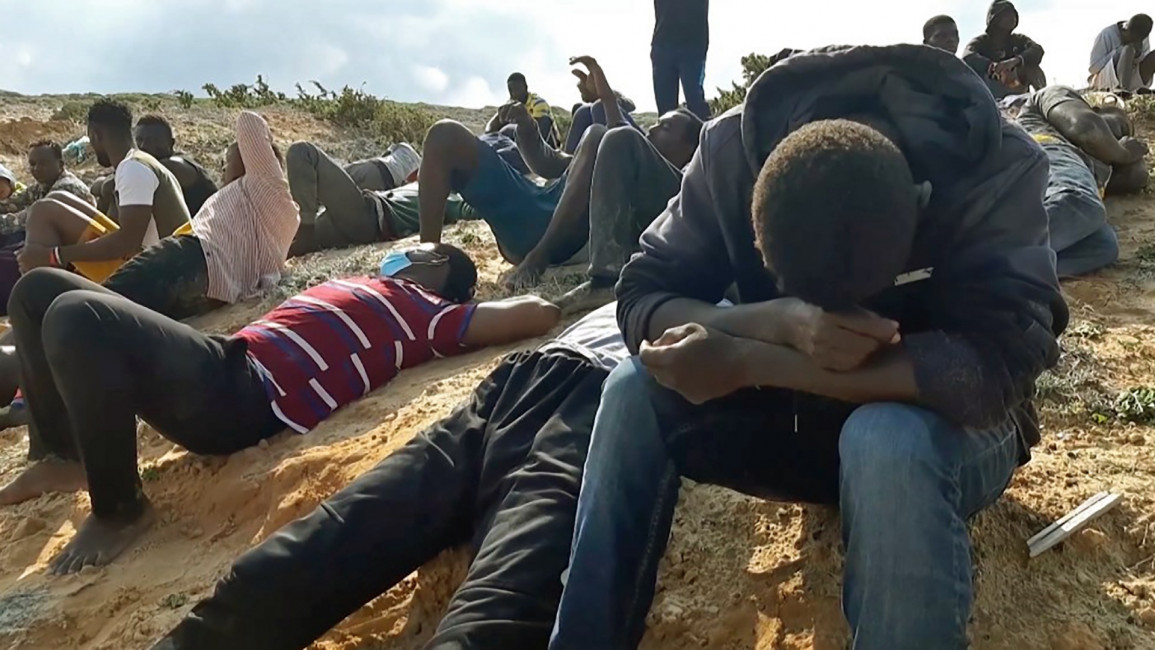
Evacuated from Libya, 'indefinite transit' is keeping refugees stuck in limbo
Last year, he became one of the few refugees evacuated to Niger by UNHCR's Emergency Transit Mechanism (ETM). The mechanism was set up in 2017 to evacuate vulnerable refugees and asylum seekers from places of detention until more durable solutions are found.
Yet despite finally escaping Libya, Ibrahim is now stuck in transit, like hundreds of other evacuees who have remained in limbo in Niger - some of them for up to three years.
By the end of 2020, 3,318 individuals had been evacuated from Libya to Niger via the Emergency Transit Mechanism while 515 had been evacuated to Rwanda, according to UNHCR. Although these were intended to be temporary stops, long processing times paired with very few resettlement places has left many stuck there - with their lives on hold.
Although Covid-19 led to the suspension of evacuation and resettlement flights between March and August 2020, the delays predate the pandemic.
 |
Procedures intended to protect and resettle refugees fleeing abuse should not aggravate their trauma |  |
Long-term uncertainty, isolation and harsh conditions in the Niger emergency transit facility have led refugees waiting there to develop "psychological problems," says Ibrahim.
Procedures intended to protect and resettle refugees fleeing abuse should not aggravate their trauma.
Amnesty International has documented a litany of abuses against refugees and migrants who are regularly arbitrarily detained in appalling conditions in Libya, including unlawful killings; abductions; torture; rape and other sexual violence; and forced labour and other exploitation.
Twitter Post
|
Despite this, the EU and member states continue to support the Libyan Coast Guard to return those fleeing across the Mediterranean back to Libya, while offering an abysmally low number of resettlement places and alternative pathways for protection, trapping desperate men, women and children in a cycle of abuse.
Just this week, a ship carrying more than 130 refugees and migrants attempting to reach Europe sank off the coast of Libya. Since 2014, more than 17,300 migrants and refugees have died or disappeared in the central Mediterranean attempting to reach Europe, according to IOM.
Read more: Migrant boat with 130 aboard capsizes off Libya
Five refugees who spoke to me in recent weeks from Rwanda and Niger, where they had been evacuated within the past two years, in addition to five refugees still in Libya and desperate for protection, all expressed frustration at the lack of clarity on a way out, leaving them in despair. Two reported suicide attempts and other self-harm among migrants evacuated and waiting indefinitely for resettlement.
Since 2019, refugees living in shelters at the Hamdallaye ETM facility, some 40 kilometres outside Niger's capital, Niamey, have endured particularly harsh conditions: strong winds and desert temperatures of over 40 degrees celsius. Last year, rain and flooding temporarily cut them off from the connecting road, creating additional barriers to accessing services. Refugees noted multiple tent fires which took the lives of three people in December 2020. "Daniel", who has lived in the facility since 2019, said that refugees there felt abandoned and "confined in one place like animals".
Refugees also worry that the longer their cases drag on in the transit facilities, the more hope of evacuations for those left behind in Libya dims.
"Solomon", struggling to stay safe in Tripoli after two years of horrific detention, does not know when - or whether - he will be evacuated to safety. He explained that refugees like him who cannot access protection feel "hopeless and desperate," with no options but to "keep trying to cross the sea."
As of January 2021, UNHCR had received 6,351 resettlement pledges for refugees in the Libya-Niger/Rwanda context, from countries including EU member states, Canada, Norway, Switzerland, the UK, and the US.
 |
EU countries must urgently increase resettlement places and open additional safe and legal routes |  |
But these pledges are woefully insufficient compared to the 43,348 asylum seekers and refugees registered in Libya with UNHCR, as well as others in need of international protection. Of those few who left Libya to Rwanda and Niger through the ETM, fewer than 3,000 had been resettled by the end of 2020 - a scale and pace simply inadequate to meet protection needs.
If EU member states and other receiving countries are serious about prioritising regular pathways for refugees, rather than simply keeping them out, they must urgently increase resettlement places and open additional safe and legal routes.
For the many in immediate need of safety in Libya, the odds of gaining access to legal pathways should not feel slimmer than their chances of surviving one of the most dangerous journeys in the world.
*All names have been changed.
Delphine Rodrik is the North Africa Migration Fellow at Amnesty International.
Join the conversation @The_NewArab
Have questions or comments? Email us at: editorial-english@alaraby.co.uk
Opinions expressed in this article remain those of the author and do not necessarily represent those of The New Arab, its editorial board or staff.



